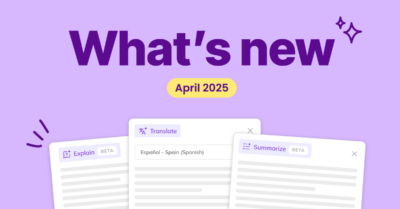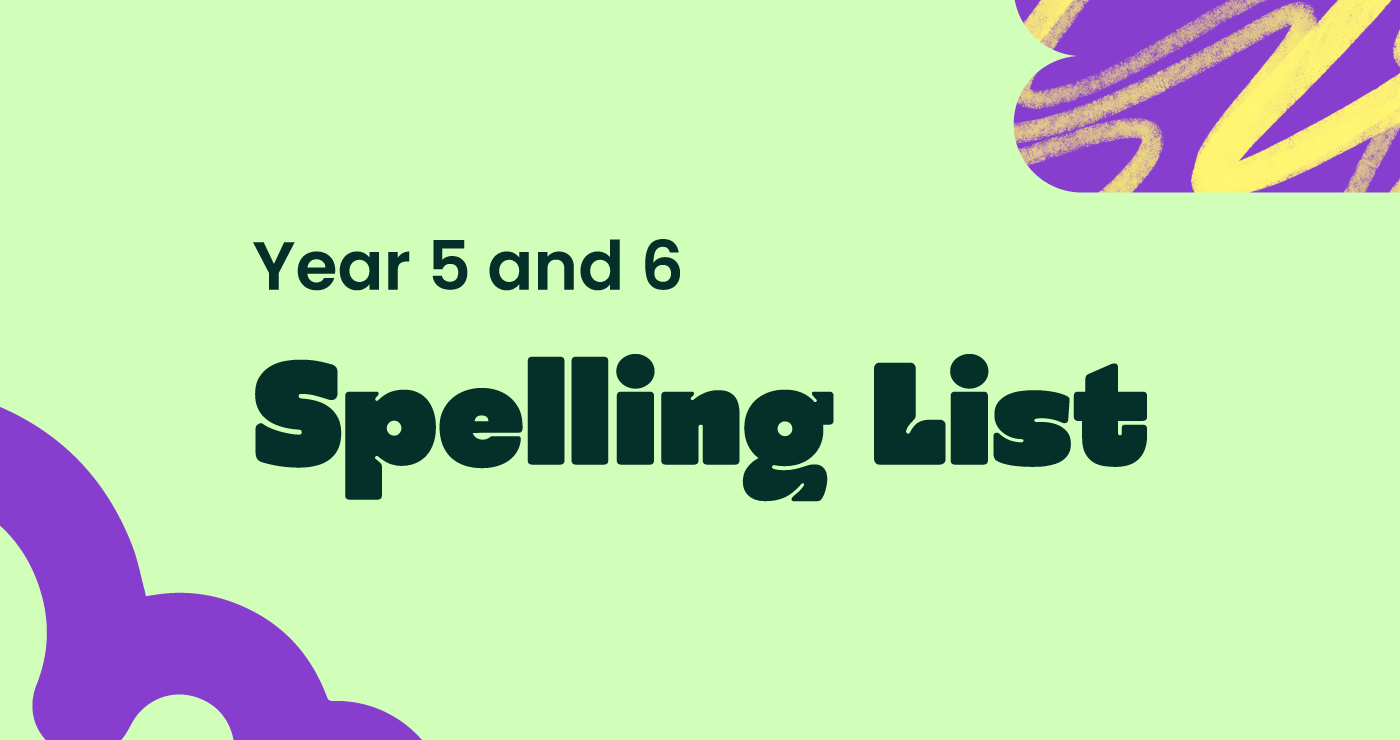Shirin Bradfield
To improve primary school students’ spelling, introduce strategies for learning new words. You can create a Key Stage 2 word list for students to practise at home for any in-class spelling tests. The words on the list should cover common spelling errors and important spelling rules. The English language has some difficult words that Key Stage 2 students need to understand, so we’ve prepared some ideas for your students to master common exception words. This will help you build a statutory spelling list that your students will need to learn from the national curriculum.
Spelling is a wonderful opportunity to practise SMART goal setting with your students, so we’ve prepared some SMART goal tips and tricks for you. Although there are many spelling rules, as with your times tables, some words just need to be memorised. This is especially true when words do not follow standard spelling rules.
Lesson plan
- Introduction: Begin by reviewing the previous week’s spelling list and have students practise spelling some of the words aloud. Ask students to identify any words that they found particularly challenging. Remember to include common exception words.
- New words: Introduce the new spelling list for the week and explain any unfamiliar words. Read the words aloud and ask students to repeat them.
- Word origins: Choose one or two words from the list and discuss their origins and meanings. Ask students to identify any other words they know that come from the same root. For example, if the word is ‘telegraph’, discuss words like ‘telecommunications’ and ‘teleportation’. What connects these words?
- Word sorting: Write a selection of words from the spelling list on the board and have students sort them into categories based on their spelling patterns. They will see that adding suffixes changes the meaning of the word. For example, if the words are ‘accelerate’, ‘accentuate’, and ‘acceptance’, the categories might be ‘-ibly’, ‘-ence’, ‘tial’, ‘cial’, ‘ ency’, ‘ancy’ and ‘-ance’. Discuss any patterns that emerge from the word endings and encourage students to identify other words that fit those patterns.
- Letter-strings: Coach your students to be able to identify letter strings. A letter string is a group of letters that appear in a word. For example, these words: string straight strike strain. all contain the letter string ‘str’.
- Pronunciation and homophones: Write some sentences with homophones to demonstrate the different meanings of words that are pronounced the same. For example ‘the maid made sure to sweep the floor’. Writing sentences with homophone pairs is a wonderful way of teaching students the different meanings of homophones.Due to the context of the sentences, they can clearly see the different meanings of the words, despite their same pronunciations.
- Spelling worksheet: Hand out the spelling worksheet and ask students to complete it independently. The worksheet should include a mix of new words and review words from previous weeks. Try and mix it up with some tricky words such as ‘thorough’, ‘twelfth’, ‘variety’, ‘vegetable’, ‘vehicle’, and ‘yacht’.
- Review: Go over the worksheet answers as a class and ask students to share any strategies they used to learn new words.
- Homework: Assign homework that reinforces the new spelling words, such as writing sentences or creating flashcards.
Review students’ progress throughout the lesson and provide feedback as needed. Use the completed spelling worksheets to assess their understanding of the new words and their ability to apply spelling patterns.
Spelling worksheets for years 5 and 6
We know how time-consuming it can be to coordinate the most appropriate words for different levels of Key Stage 2, so here are our very own worksheets for strangely spelt words.
- Word building — Our Word Building worksheet is a fun and interactive way for students to practise creating words using letter tiles or written letters.
- Verb matching worksheet — Our Verb Matching worksheet is a great way for students to practise identifying and matching verbs with the correct subject. Please find the answer worksheet here.
- Unscramble the words worksheet — Our Unscramble the Words worksheet is a fun and challenging way for students to practise their spelling and word recognition skills. The answer worksheet is here.
- Spelling list worksheet — Looking for a comprehensive spelling list? Our list includes frequently used words and challenging vocabulary to help improve your students’ spelling skills.
- Spelling worklist — Our worklist list includes high-frequency words and tricky words to help build your students’ spelling skills.
Memorisation techniques for your students to practise
Although you’re teaching phonics and spelling rules, there’s an aspect of pure memorisation that your students will have to master for spelling. The national curriculum means there’s a certain quota the students must memorise. Here are some techniques and games to help Key Stage 2 students memorise important words.
- Look, Cover, Write, and Check is a classic technique. Look at the word… Cover the word… Write the word… And finally, check it.
- Make the student the teacher. Use a resource to understand how to spell, and then have your students teach someone else the word or the spelling rule.
- Work on visualisation. Try games that use visual memory – (‘the cat likes to c-url up’) and encourage them to think up their own pictures.
- Use an acrostic technique. Use phrasing to remember long words like ‘necessary’. Never Eat Cake Eat Salad Sandwiches And Raspberry Yoghurt.
- Try multisensory instruction. A great way to practise spelling is through a typing course. Students type and spell words over and over until they learn which letters keys represent, and how to reach for them in sequence. They do this with the help of muscle memory.
- A multi-sensory approach like Touch-type Read and Spell‘s will also help with grapheme-phoneme mapping and strengthen reading skills.
- Try to help your students make connections to remember how words are spelt.
- Singing the letters out loud with music should mean that the tune, and therefore the word, is remembered.
- Find ‘words within words’. It can be useful to remember shorter words within the tricky spelling. For example, the word ‘independent’ has the following smaller words inside it: ‘depend’, ‘dependent’, ‘dent’. The word ‘conscience’ can be tricky to spell. However, if you remember to always include the word ‘science’, it becomes easier to remember the correct spelling. Try and break these words within words down with the use of the hyphen. Students will readily recognise this when you break it down.
- Do word searches — we have a whole library of word search worksheets here.
- Read as much as possible — that is the tip from the official Spelling Bee in the US.
Remember, practice makes perfect!
We hope that you’ll really enjoy these fun and engaging tips for helping your students get to grips with some words that are difficult to spell as well as those high-frequency words. The national curriculum spelling list should be achievable in no time with these excellent techniques.
You may also like

Unlocking understanding: Kami’s latest updates designed for every learner

The state of SPED and ELL technology in 2025

